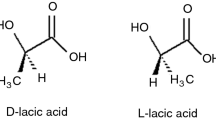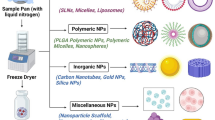Abstract
The purpose of this study was to investigate the stabilizing action of polyols against various protein degradation mechanisms (eg, aggregation, deamidation, oxidation), using a model protein lysozyme. Differential scanning calorimeter (DSC) was used to measure the thermodynamic parameters, mid point transition temperature and calorimetric enthalpy, in order to evaluate conformational stability. Enzyme activity assay was used to corroborate the DSC results. Mannitol, sucrose, lactose, glycerol, and propylene glycol were used as polyols to stabilize lysozyme against aggregation, deamidation, and oxidation. Mannitol was found to stabilize lysozyme against aggregation, sucrose against deamidation both at neutral pH and at acidic pH, and lactose against oxidation. Stabilizers that provided greater conformational stability of lysozyme against various degradation mechanisms also protected specific enzyme activity to a greater extent. It was concluded that DSC and bioassay could be valuable tools for screening stabilizers in protein formulations.
Similar content being viewed by others
References
Lee HJ. Protein drug oral delivery: the recent progress. Arch Pharm Res. 2002;25:572–584.
Jen A, Merkle HP. Diamonds in the rough protein crystals from a formulation perspective. Pharm Res. 2001;18:1483–1488.
DiBiase MD, Kottke MK. Stability of polypeptides and proteins. In: Carstensen JT, Rhodes CT, eds. Drugs and the Pharmaceutical Sciences, Drug Stability. New York, NY: Marcel Dekker, 2000;107:853–874.
Cleland JL, Daugherty A, Mrsny R. Emerging protein delivery methods. Curr Opin Biotechnol. 2001;12:212–219.
Cleland JL, Powell MF, Shire JS. The development of stable protein formulations: a close look at protein aggregation, deamidation, and oxidation. Crit Rev Ther Drug Carrier Syst. 1993;10:307–377.
Wang W. Instability, stabilization, and formulation of liquid protein pharmaceuticals. Int J Pharm. 1999;185:129–188.
Xie M, Schowen R. Secondary structure and protein deamidation. J Pharm Sci. 1999;88:8–13.
Daniel RM, Dines M, Petach HH. The denaturation and degradation of stable enzymes at higher temperature. Biochem J. 1996;317:1–11.
Li S, Schoneich C, Borchardt RT. Chemical instability of protein pharmaceuticals: Mechanism of oxidation and strategies for stabilization. Biotechnol Bioeng. 1995;48:490–500.
Bummer PM, Koppenol S. Chemical and physical considerations in protein and peptide stability. In: McNally EJ, ed. Drugs and the Pharmaceutical Sciences, Protein Formulation and Delivery. New York, NY: Marcel Dekker; 2000:15–18.
Stoll VS, Blanchard JS. Buffers: principles and practice. In: Deutscher M, Abelson J, eds. Guide to Protein Purification: Methods in Enzymology (Methods in Enzymology Series). Vol 182. London, UK: Academic Press, 1990:24–37.
Shugar D. The measurement of lysozyme activity and the ultra-violet inactivation of lysozyme. Biochim Biophys Acta. 1952;8:302–309.
Smith PK, Krohn RI, Hermanson GT, et al. Measurement of protein using bicinchoninic acid. Anal Biochem. 1985;150:76–85.
Richard L, Remmele RL Jr, Nancy SN, Subhashini S, Wayne RG. Interleukin-1 receptor (IL-1R) liquid formulation development using differential scanning calorimetry. Pharm Res. 1998;15:200–208.
Azuaga AI, Dobson CM, Mateo PL, Conejero LF. Unfolding and aggregation during the thermal denaturation of streptokinase. Eur J Biochem. 2002;269:4121–4133.
Barone G, Catanzano F, Del Vecchio P, Giancola C, Graziano G. Thermodynamics of protein stability: a family of ribonucleases. Pure Appl Chem. 1997;69:2307–2313.
Komsa PR, Koynova R, Kostov G, Tenchov B. Discrete reduction of type 1 collagen thermal stability upon oxidation. Biophys Chem. 2000;83:185–195.
Sebastien B, Forbes RT, York P, Nyqvist H. A central composite design to investigate the thermal stabilization of lysozyme. Pharm Res. 1999;16:702–708.
Chang BS, Randall CS, Lee YS. Stabilization of lyophilized porcine pancreatic elastase. Pharm Res. 1993;10:1478–1483.
Johnson CM, Cooper A, Stockley PG. Differential scanning calorimetry of thermal unfolding of the methionine repressor protein (MetJ) from Escherichia coli. Biochemistry. 1992;31:9717–9724.
Kenar KT, Garcia-Moreno B, Freire EA. Calorimetric characterization of the salt dependence of the stability of the GCN4 leucine zipper. Protein Sci. 1995;4(9):1934–1938.
Son K, Kwon C. Stabilization of human epidermal growth factor (hEGF) in aqueous formulation. Pharm Res. 1995;12:451–454.
Shire SJ. Stability characterization and formulation development of recombinant human deoxyribonuclease I (Pulmozyme, [dornase alpha]). In: Pearlman R, Wang YJ, eds. Formulation, Characterization, and Stability of Protein Drugs. New York, NY: Plenum Press; 1996:393–426.
Cross RT, Schirch V. Effect of amino acid sequence, buffers, and ionic strength on the rate and mechanism of deamidation of asparagine residues in small peptide. J Biol Chem. 1991;266:22549–22556.
Voet D, Voet JG. Biochemistry. New York, NY: John Wiley & Sons, Inc: 1995:381–383.
Powell MF: A compendium and hydropathy/flexibility analysis of common reactive sites in proteins: reactivity at Asn, Asp, Gln, and Met motifs in neutral pH solution. In: Pearlman R, Wang YJ, eds. Formulation, Characterization, and Stability of Protein Drugs. New York, NY: Plenum Press, 1996;1–140.
Patel K, Borchardt RT. Chemical pathways of peptide degradation. II. Kinetics of deamidation of an asparaginyl residue in a model hexapeptide. Pharm Res. 1990;7:703–711.
Oliyai C, Borchardt RT. Chemical pathways of peptide degradation. IV. Pathways, kinetics, and mechanism of degradation of an asparyl residue in a model hexapeptide. Pharm Res. 1993;10:95–102.
Richards FM. Protein stability: still an unsolved problem. Cell Mol Life Sci. 1997;53:790–802.
Kang, F, Jiang G, Hinderliter A, DeLuca PP, Singh J. Lysozyme stability in primary emulsion for PLGA microsphere preparation: effect of recovery methods and stabilizing excipients. Pharm Res. 2002;19:629–633.
Capan Y, Jiang G, Giovagnoli S, Na K-H, DeLuca PP. Preparation and characterization of poly(D,L-lactide-co-glycolide) microspheres for controlled release of human growth hormone. AAPS Pharm Sci Tech. 2003;4(2);article 28.
Prestrelski SJ, Tedeschi N, Arakawa T, Carpenter JF. Dehydration-induced conformational changes in proteins and their inhibition by stabilizers. Biophys J. 1993;65:661–671.
Allison SD, Chang B, Randolph TW, Carpenter JF. Hydrogen bonding between sugar and protein is responsible for inhibition of dehydration-induced protein unfolding. Arch Biochem Biophys. 1999;365:289–298.
Kendrick BS, Chang BS, Arakawa T, Peterson B, Randolph TW, Manning MC, Carpenter JF. Preferential exclusion of sucrose from recombinant interleukin-1 receptor antagonist: role in restricted conformational mobility and compaction of native state. Proc Natl Acad Sci U S A. 1997;94:11917–11922.
Lee JC, Timasheff SN. The stabilization of proteins by sucrose. J Biol Chem. 1981;256:7193–7201.
Author information
Authors and Affiliations
Rights and permissions
About this article
Cite this article
Singh, S., Singh, J. Effect of polyols on the conformational stability and biological activity of a model protein lysozyme. AAPS PharmSciTech 4, 42 (2003). https://doi.org/10.1208/pt040342
Received:
Accepted:
DOI: https://doi.org/10.1208/pt040342




